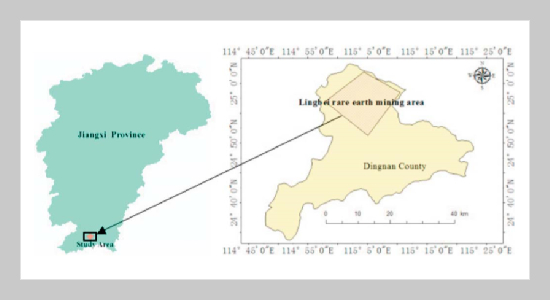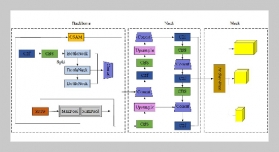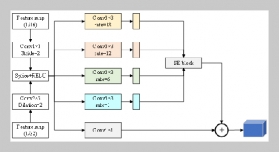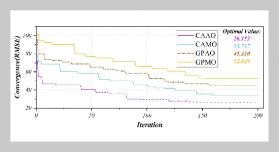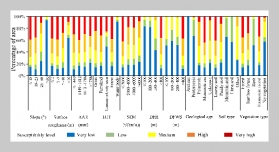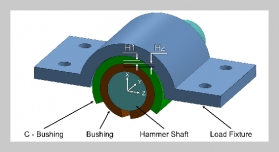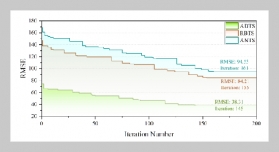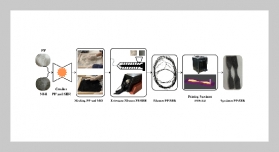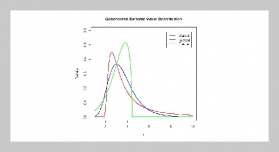REFERENCES
- [1] Liao, C. S., Wu, S., Cheng, F. X., Wang, S. L., Liu, Y., Zhang, B. and Yan, C. H., “Clean Separation Technologies of Rare Earth Resources in China,” Journal of Rare Earths, Vol. 31, No. 4, pp. 331�336 (2013). doi: 10.1016/S1002-0721(12)60281-6
- [2] Briki, M. Y., Ji, H. B., Gao, Y., Ding, H. J. and Li, C., “Distribution of Rare Earth Elements in Agricultural Soil and Human Body (Scalp Hair and Urine) Near Smelting and Mining Areas of Hezhang,China,”Journal of Rare Earths, Vol. 34, No. 11, pp. 1156�1167 (2016). doi: 10.1016/S1002-0721(16)60148-5
- [3] Wang, X. L., Yang, L. and Li,H.K.,“Public Participation-based Regulatory Mode and Platform System for Mining of Ionic Rare Earth in Southern China,” Nonferrous Metals Science and Engineering,Vol.7,No.5, pp. 137�143 (2016). doi: 10.13264/j.cnki.ysjskx.2016. 05.024 (Chinese)
- [4] Feng, Y. J., Liu, Y. and Liu, Y., “Spatially Explicit Assessment of Land Ecological Security with Spatial Variables and Logistic Regression Modeling in Shanghai, China,” Stochastic Environmental Research and Risk Assessment, pp. 1�15 (2016). doi: 10.1007/s00477-016-1330-7
- [5] Ke, X. L., Feng, M. and Diao, F. Q., “Application of Improved Fuzzy Comprehensive Evaluation in Ecological Safety Evaluation in Coal Mining Areas,”Mining Safety &Environmental Protection,Vol.43,No.6, pp. 32�36 (2016). doi: 10.3969/j.issn.1008-4495.2016. 06.009 (Chinese)
- [6] Liu, Y. H. and Li, G., “Ecological Security Evaluation on Mining Area Based on Remote Sensing and PSR Model-taking Yunzhou Mining Area as an Example,” Geomatics &Spatial Information Technology,Vol.33, No. 5, pp. 134�138 (2010). doi: 10.3969/j.issn.16725867.2010.05.042 (Chinese)
- [7] Yang, J. J., Zhang, Y. Y., Lv, G. H. and Liu, W., “Ecological Security Assessment of Opencast in Zhundong Coalfield,” China Mining Magazine, Vol. 24, No. 10, pp. 76�82 (2015). doi: 10.3969/j.issn.1004-4051.2015. 10.016 (Chinese)
- [8] Xu, H. Q., “Change of Landsat 8 TIRS Calibration Parameters and Its Effect on Land Surface Temperature Retrieval,” Journal of Remote Sensing, Vol. 20, No. 2, pp. 229�235(2016).doi:10.11834/jrs.20165165 (Chinese)
- [9] Zhou, D., Lin, Z. L., Liu, L. M. and Zimmermann,D., “Assessing Secondary Soil Salinization Risk Based on the PSR Sustainability Framework,” Journal of Environmental Management,Vol.128,pp.642�654(2013). doi: 10.1016/j.jenvman.2013.06.025
- [10] Verstraete,M.M.andPinty,B.,“Designing Optimal Spectral Indexes for Remote Sensing Applications,” IEEE Transactions on Geoscience and Remote Sensing,Vol.34, No.5,pp.254�1265 (1996).doi:10.1109/36.536541
- [11] Hao, C., Oguchi,T. and Pan,W.U.,“Assessment for Soil Loss by Using a Scheme of Alterative Sub-models Based on the RUSLE in a Karst Basin of Southwest China,” Journal of Integrative Agriculture, Vol. 16, No. 2, pp. 377�388(2017). doi:10.1016/S2095-3119(16)61507-1
- [12] Holden, C. E. and Woodcock, C. E., “An Analysis of Landsat 7 and Landsat 8 Underflight Data and the Implications for Time Series Investigations,”Remote Sensing of Environment, Vol. 185, pp. 16�36 (2016). doi: 10.1016/j.rse.2016.02.052
- [13] Xu, L. Q. and Zhou, J. Q., “The New Town Development in Ecological Sensitive Area Based on Resilience Thinking,” Procedia-Social and Behavioral Sciences, Vol. 216, pp. 998�1005 (2016). doi: 10.1016/j.sbspro. 2015.12.096
- [14] Hued, A. C. and Bistoni, M. Á., “Development and Validation of a Biotic Index for Evaluation of Environmental Quality in the Central Region of Argentina,” Hydrobiologia, Vol. 543, No. 1, pp. 279�298 (2005). doi: 10.1007/s10750-004-7893-1
- [15] Qi, Z. F., Ye, X. Y., Zhang, H. and Yu, Z. L., “Land Fragmentation and Variation of Ecosystem Services in the Context of Rapid Urbanization: the Case of Taizhou City, China,” Stochastic Environmental Research and Risk Assessment, Vol. 28, No. 4, pp. 843� 855 (2014). doi: 10.1007/s00477-013-0721-2
- [16] Moges,A.,Beyene,A.,Kelbessa,E.,Mereta,S.T.and Ambelu, A., “Development of a Multimetric Plant based Index of Biotic Integrity for Assessing the Ecological State of Forested, Urban and Agricultural Natural Wetlands of Jimma Highlands,Ethiopia,”Ecological Indicators, Vol. 71, pp. 208�217 (2016). doi: 10. 1016/j.ecolind.2016.06.057
- [17] Ge,X.D.,Dong,K.K.,Luloff,A.E.,Wang,L.Y.,Xiao, J., Wang, S. Y. and Wang, Q., “Correlation between Landscape Fragmentation and Sandy Desertification: a CaseStudy in Horqin Sandy Land, China,” Environmental Monitoring and Assessment,Vol.188,No.1,p. 62 (2016). doi: 10.1007/s10661-015-5039-8
- [18] Artis, D. A. and Carnahan, W. H., “Survey of Emissivity Variability in Thermography of Urban Areas,” Remote Sensing of Environment, Vol. 12, No. 4, pp. 313�329(1982).doi:10.1016/0034-4257(82)90043-8
- [19] Sun, H., Wang, S. and Hao, X., “An Improved Analytic Hierarchy Process Method for the Evaluation of Agricultural Water Management in Irrigation Districts of North China,” Agricultural Water Management, Vol. 179, pp. 324�337(2017).doi:10.1016/j.agwat.2016.08.002
- [20] Wang,X.D.,Zhong,X.H.andPan,G.,“AGIS-based Decision Support System for Regional Eco-security Assessment and Its Application on the Tibetan Plateau,” Journal of Environmental Management, Vol. 91, No. 10, pp. 1981�1990(2010).doi:10.1016/j.jenvman.2010.05.006


